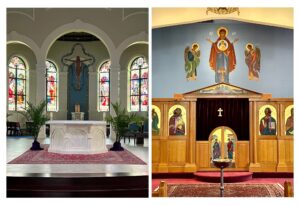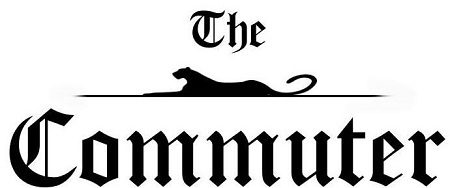By Jecko Arreglo
Spring has arrived. From shrouds of snow and piercing winds to cherry blossoms and genial breezes, spring has often been symbolized as a time of rebirth and a promise of better days. This year Muslims and Christians are following in nature’s steps as Ramadan and Lent coincide for the first time in 31 years.
In Christianity, especially in the Roman Catholic Church and Eastern Orthodoxy, Lent lasts approximately 40 days culminating on Easter on April 20. While in Islam, Ramadan lasted for 30 days from February 28 to March 30, concluding with Eid-Al Fatr on March 31st.
For both faithful Christians and Muslims, these holy months are marked by almsgiving, fasting, self-discipline, and spiritual renewal.
Ramadan occurs in the ninth month of the Islamic lunar Calendar on a new moon and is considered to be one of the holiest periods for Muslims as this marks the month that the central religious text of Islam, the Quran, was revealed. Sawm (fasting) is one of the five pillars of Islam. However, fasting goes beyond abstinence.
Tammy Dar, Administrative Assistant at the Islamic Society of Frederick, said, “We also avoid getting angry, we avoid small white lies that you tell during the day or yelling at your kids. It’s more than the food aspect… It’s completely teaching yourself how to control your emotions. It’s like controlling the lower self and elevating yourself to a higher level.”
During Ramadan, Muslims fast from suhoor (before the break of dawn) to iftar, the time in which the fast is broken at dusk. In between, they are in a completely fasted state abstaining from food, water, and conjugal relations.
Those who are sick, pregnant, and traveling are exempted from the fast. To make up for missed fasts, Muslims are have the option to donate a fidyah– a religious donation to feed the poor.
“For some other people, whether its covering your body or whether its fasting, they look at that and say, ‘Oh my gosh, that’s sounds really confining’ or ‘rigid’ or ‘difficult’ but, actually, it is very liberating because you’re free from a lot of other things that sometimes encroach upon our consciousness,” Dar continued. “This takes you away from all of that and reminds you of the things that are really important.”
Eid-Al Fitr occurs at the end of Ramadan, which is marked by major celebrations, family gatherings and feasting on foods from various traditions. Eid means “festival” and Al-Fitr means “the breaking of the fast.”

In Christianity, Lent’s origin is found in the Holy Bible, primarily in the three temptations of Jesus Christ when he walked in the desert and denied the Devil in a fasted state for 40 days and scriptural figures such Moses and John the Baptist–who lived on locusts and wild honey.
Two of the largest denominations of Christianity, Roman Catholicism and Eastern Orthodoxy, have practiced Lent possibly as far back as the fourth century B.C.
In the Roman Catholic tradition, Western Lent began on Ash Wednesday, March 5th. On this day, faithful Catholics are marked with crosses on their foreheads using ashes made from palm branches. As a priest marks crosses on the laity he says, “Remember you are dust and in dust you shall return.”
For the whole of Lent, Catholics are to abstain from meat on Friday. Abstinence from various pleasures such as sweets and excess social media use are also encouraged. Practicing almsgiving is emphasized as well.
Deacon Tim Moore discusses one of the services at St. Katharine Drexel during Lent: “We have a theme going through the whole Lent preached through the weekend [called] ‘We Are Marked by Mercy.’ We are all given the mercy of God. [We draw into question whether] we understand the benefit of that, and what we do gives that benefit away to other people.”
In the Eastern Orthodox tradition, fasting and asceticism plays a central role in their day to day life. Outside of Great Lent they fast from meat, dairy, olive oil, alcohol every Wednesday and Friday throughout the year and they have four major fasting periods: Nativity Fast, Great Lent, Apostles Fast, and Dormition Fast. In total, some Orthodox Christians may be fasting from a certain food group (usually meat) for 180 days or more in a year.
“[Fasting is] a spiritual discipline. It’s supposed to teach us self-control. If you can control what goes into our mouth, hopefully, we can control what comes out of our mouth.” Father John Bullock said, who is a Greek Orthodox priest at St. Peter and Paul Greek Orthodox Church.
Eastern Christianity’s intense fasting pattern traces its origin from third century B.C. when early Christian monks ventured into the Egyptian desert to become monastics. This ascetic practice so quintessential to the eastern churches is a part of a wider tradition called hesychia, which means “stillness, rest, quiet, silence” in Greek, which fully developed in the 14th century in Mount Athos, Greece.
“If we have structure in one part of our life, maybe two… [eventually] that spreads throughout the rest of our life…. Combined with other things, [like] prayer and almsgiving, helps a person flourish and grow as a Christian,” Father John said.
Great Lent began on Clean Monday (March 3rd) and Orthodox Christians continue their usual fasting pattern; however, they only eat one meal (if possible) on the weekdays and two meals (wine and olive oil included) on the weekends.
“To be free really means to have the freedom to grow into the person that we were created to be. What we were meant to be,” Father John said. “So having obedience to someone else means that our own will we’re putting aside. Our own ego, we’re putting aside… putting [those] aside, frees us.”
It’s important to note that, while fasting can be especially strict, legalism in Christianity is discouraged and laypersons are incentivized to discuss the fast with their priest or “spiritual father.” In general, fasting rules should not be decided alone as it can lead to disobedience, pride and health concerns.
“Fasting is different from [person to person]. You don’t start off going from zero to a hundred. To begin, you could have a small obedience. Just no meat on Wednesdays and Fridays…or no meat on Wednesday… Again, to help develop virtue as a Christian.” Father John said.
Catholic Lent ends on April 17th, on Holy Thursday while Orthodox Lent closed on April 12th, Lazarus Saturday. On April 20th, after Holy Week, Easter Sunday commemorates the resurrection of Jesus Christ.
During Lent and Ramadan, fasting is not only primarily a battle against physical separation. The struggle for the faithful is to push forward against personal weaknesses in order to achieve the summit of all spiritual life: to overcome oneself.

